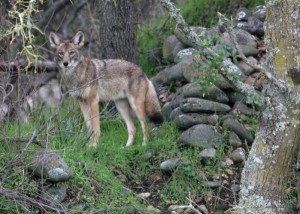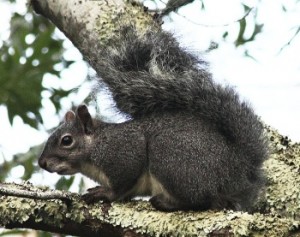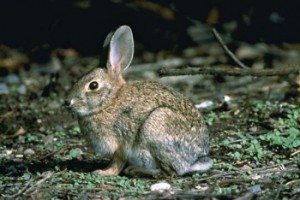It’s all right here, people. Honestly, is there anything that Griffith Park doesn’t have? Concerts, zoo animals, observatory, playground, merry-go-round, train rides, bike paths, jogging trails, golf courses…
Keep reading; we’re going to add to that litany.
Comprised of 4,310 acres, L.A.’s biggest park – heck it’s the one of largest urban parks in the United States – is also home to a surprising amount of native fauna, critters that have, for the most part, learned to adapt to the urbanization that surrounds them.
On August 11, biologist Dan Cooper will discuss the life and times of some of the park’s local inhabitants, from predators to prey, at a lecture “Major Mammals of Griffith Park” taking place at the Los Feliz Library at 6:45 p.m. and sponsored by the Friends of Griffith Park.
Embarking on a long-term research project at the park, Cooper loves to set the record straight about the many misconceptions about animals at Griffith. “So many people don’t realize just how many different types of animals are here and that so many of them are the big mammals,” he says rattling off mule deer, coyotes, bobcats, gray foxes and scattered reports of mountain lions, which may or may not be accurate. “Also, [the park] has been referred to just a little isolated patch, but we’re discovering that’s not completely true.”
Indeed, while Griffith Park is, for the most part, encircled by freeways on all sides, Cooper believes that animals do find ways to connect to other unpopulated lands. In fact, one of his upcoming projects will be working with the US Geological Survey, the National Park Service, Caltrans and the Los Angeles Dept. of Recreation and Parks installing cameras to see what wildlife crosses the 101 Freeway at the Cahuenga Pass. “We know that coyotes and deer come right down to the 101,” he says. “Can they get out? Do they get out? If they do, they have a clear shot to the 405 freeway. Do they follow ridges, roads, footpaths?”
Citing that management folks as well as wildlife experts don’t know how animals move across potential barriers – like big concert freeways – Cooper says this kind of data can take out a lot of guess work when it comes to future planning or creating guidelines. Plus, it can illuminate the number of animals that live in the area.
“Everyone wants to know how many coyotes, how many skunks, how many this or that but the truth is, we are all just guessing,” he says. “I wouldn’t be surprised to learn that there are between 50-100 mule deer in the park.”
Another Griffith Park-related project for Cooper involves studying the Western gray squirrel, a mountain species that was once plentiful but now number about 25 in the park. Working with the L.A. Zoo, Cooper is researching the actual population size, discovering how they exist with the other squirrel species in the park, the Eastern fox (non-native) and California ground squirrel, and how to best conserve this small but seemingly stable population. “The ironic thing is that they used to be in the zoo, but not anymore,” says Cooper.
Maybe the fire of 2007 had something to do with the squirrels’ downsizing? No one knows, but that fire, while it did plenty of damage, also kicked off a lot of interest in the park, says Cooper. “People realized that there is something here worth saving. It’s so hard to say what was lost in terms of wildlife, because many animals live underground.” (Not those gray squirrels, however, since they fancy the high limbs of the oak trees, many of which were burned. Cooper muses: “Did the fire reduce the population in half? Could another fire wipe them out? We really don’t know.”)
All in all, Cooper challenges folks – scientists and civilian – to not just view Griffith Park as a big isolated island, but maybe see it as a self-sustaining eco-system, a self-contained world unto itself. Technically a part of the Santa Monica Mountains, Griffith Park is more than just the landmarks we normally associate with this rugged terrain marked with steep rocky canyons and breath-taking vistas.
“The more you learn about it, the more you’ll appreciate it,” he says, adding that in the past three years he’s spent hundreds of hours in the park exploring hidden areas, remote paths and wild habitats. One animal he’d like to spot at Griffith Park would be the brush rabbit, a hopper that’s darker with smaller ears than its oft-seen relatives, the cottontail and jack rabbit.
Cooper agrees that it’s hard for folks to understand the depth of animals of Griffith Park since these are critters that know how to hide, come out mainly at night and steer clear of humans. They aren’t, after all, like the giraffes, lions and chimps found nearby in cages at the zoo. “Just know they are there,” he says about Griffith’s native residents.
So, if you are out hiking and don’t see any animals on the trail, just know the critters of Griffith Park are nearby, underneath bushes, inside of trees, in dirt holes, in branches, watching you, waiting and wondering.
For more information about Dan Cooper’s talk, “Major Mammals of Griffith Park,” Aug. 11 at the Los Feliz Branch Library call (323) 913-4710.
— By Brenda Rees; photos: top, coyote; middle, Western gray squirrel; bottom, brush rabbit.



